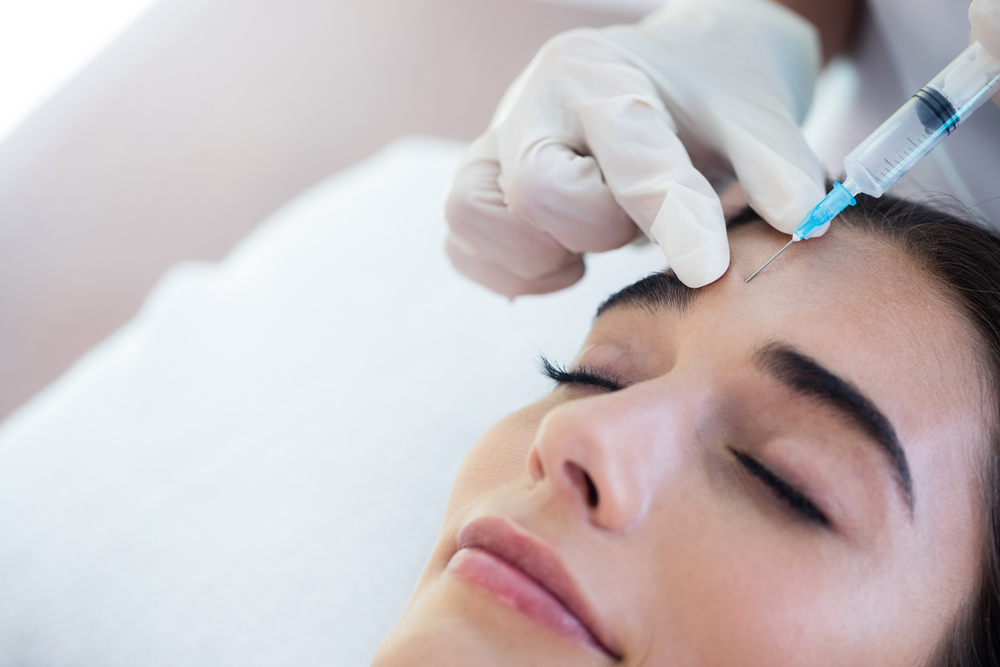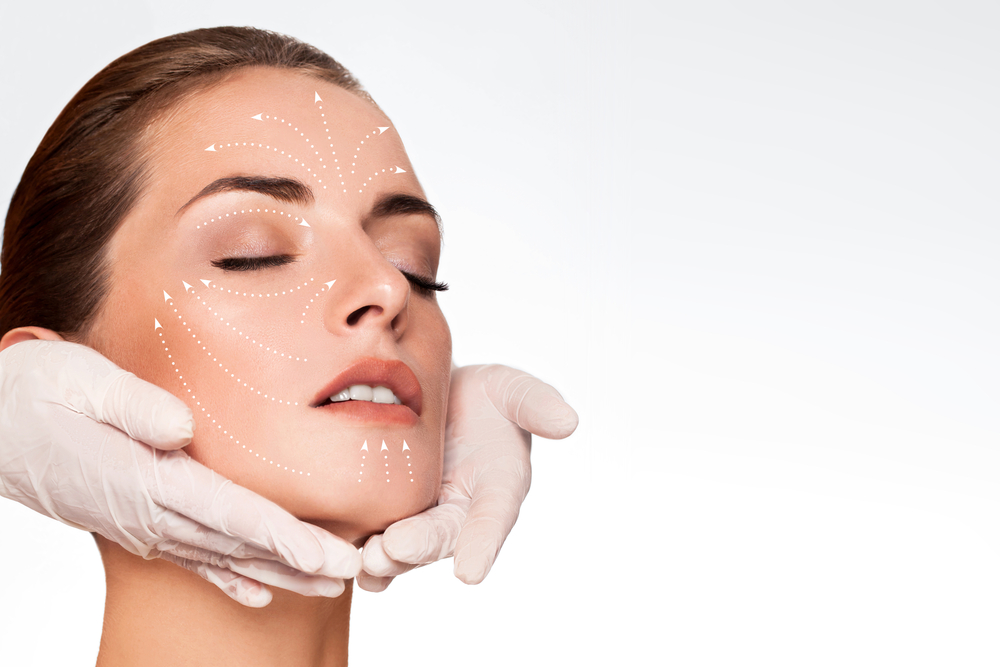The active ingredients in Botox haven’t changed much since their anti-aging properties were discovered in the 1980s, but new formulas that are poised to hit the market soon may offer alternatives to this popular treatment.
Botox has been the leading non-surgical anti-aging procedure since it was formally introduced to the market as a cosmetic treatment in 2002. It’s one of the first steps down the path of an anti-aging regimen, and many patients return to this tried and true line-eraser every three months. There’s no downtime, the results are visible within a week, and it’s nearly guaranteed to work. That’s a tough act to follow.
As we age, habitual facial expressions leave marks on the skin. Botox and its two main competitors, Dysport and Xeomin, use neurotoxic proteins to block signals between the nerves and muscles in the face. Frequently referred to simply as toxins, these molecules paralyze the muscles at the site of the injection, causing fine lines and wrinkles to soften and eventually dissipate.
To date, toxins have been approved for the treatment of wrinkles between the brows (also known as the glabellar lines), forehead lines, crows feet, and for excessive sweating. But with each year the indications for which Botox can be used expand, as doctors find new applications for this 30 year old drug, including migraines, excessive sweating, and overactive bladders. However, the molecule itself hasn’t changed much since ophthalmologist Dr. Alan B. Scott developed the drug to treat eye spasms (blepharospasm) in 1980s – until now.

New Botox Alternatives: Revance & Anterios
Revance, a young biotech company based in Newark, California, is hoping it can carve out a piece of the wrinkle-freezing market for itself. It’s developing an injectable toxin that can last six months, nearly twice as long as Allergan’s Botox, which could save patients valuable time by minimizing the number of visits they make to a doctor’s office.
How the company is achieving these results is fairly straightforward, says Dan Browne, CEO and co-founder of Revance. The longer the drug stays in or near the muscle, the stronger the paralytic effect. And the more paralyzed a muscle is, the longer it will take for the effects to wear off.
Revance’s new formula extends ‘residence time’ at the injection site by removing all the animal and human proteins from the molecule to create a more purified form of botulinum toxin. Combined with a proprietary peptide, the result is a toxin referred to in clinical trials as RT002. The drug’s main selling point is that it halves the number of required visits to keep laugh lines at bay, and more importantly, the number of needle jabs currently required to produce the patient’s desired results.
The pursuit of a longer-lasting Botox is easy to understand. Botox typically only lasts three to four months, depending on the patient, and injections are often painful and can lead to bruising. Then there’s the hassle of scheduling those quarterly appointments around your work schedule to consider.
Dr. Steven Dayan, a facial plastic surgeon in Chicago, Illinois, participated in the drug’s phase 2 double-blind clinical trials, and says his patients have demanded longer lasting treatments to maximize their investment in themselves. “If something can be more efficient, longer lasting, cause less discomfort, save time and cost less money, what patient wouldn’t want that,” Dr. Dayan explains.
If something can be more efficient, last longer, cause less discomfort, save time and cost less money, what patient wouldn’t want that.
Dr. Steven Dayan
Increasing the length of time between office visits may also benefit medical clinics, as freeing up appointment times typically reserved to administer Botox could enable doctors to treat more urgent skin diseases, and fewer visits could mean reduce staffing requirements. Revance’s RT002, which started phase clinical III trials this year, seems to be a win-win for physicians and their patients. The only thing better than a longer lasting Botox would be a Botox treatment that isn’t delivered through a needle.
And that’s exactly what Allergan is attempting to do. Last year the Dublin, Ireland-based company purchased Anterios, a biotech company that is in the process of developing a topical neurotoxin formula. Anterios held a proprietary delivery platform necessary to apply local, targeted delivery of neurotoxins in its drug, ANT-1207, without the need for injections.
This revolutionary delivery method could expand the already large market for Botox. There were 6.7 million cosmetic procedures using Botulinum Toxin Type A in 2015, according to the American Society of Plastic Surgeons. If the new drug can interest patients who have been sitting on the fence because of their fear of needles and pain, Allergan may be able to boost the demand for Botox even more.
According to Dr. Dayan, there is currently no research on the number of needle-phobic people out there. Allergan paid $1 billion to acquire Anterios, which should give you an idea of the hopes it holds for this product and the market that awaits it.
“If you can take away bruising, swelling and pain and assure them a natural look, we would have many more patients interested in aesthetic treatments,” says Dr. Dayan.
Finding this holy grail of painless and effective anti-aging treatments may be harder than Allergan thinks. Revance has also developed a topical form of their toxin, but its gel didn’t pass its phase III clinical trials. The company found that results from patients enrolled in the trial weren’t better than the current injectable forms on the market, which is the bar the gel formula needed to meet to earn FDA approval.

But trading a little efficacy for a needleless application is probably fine for a lot of patients, according to Dr. Dayan. “Switching from a minimally invasive to a non-invasive treatment is enough to convince people to accept a slightly less paralytic effect on their muscles.” In fact, that could even be an advantage, he notes.
“The great thing about injectables is that they work well – maybe even too well,” says Dr. Dayan, who knows of many people that want the benefits of Botox, but are afraid of ending up with that “frozen” look. And then there’s the allure of never jabbing your face with a 30 gauge needle a half dozen times or so ever again.
However, a topical formula “almost as good” as Botox isn’t good enough for the FDA. Revance withdrew its phase clinical III clinical trial to focus on RT002. And although a cosmeceutical using the formula isn’t out of the question, it’s not a priority at this time either, says Browne.
Results from RT002’s clinical phase III trials are expected to be announced at the end of this year. Its competitor, ANT-1207, which can also be used to treat hyperhidrosis (excessive sweating), acne, and crow’s feet lines, has already completed phase II clinical trials, and is expected to enter phase III clinical trials this year. Allergan has been fairly mum since it acquired the drug, and did not respond to repeated requests for comment about phase III trials.
Even if both of these novel drugs are successful and earn FDA approval, it would still take a couple of years until they reach the market. The best-case scenario is that they become available in doctor’s offices in 2019. This means that in a few years, erasing wrinkles may not require as many needle jabs or visits to the doctor. The only thing better would be not needing Botox at all.









